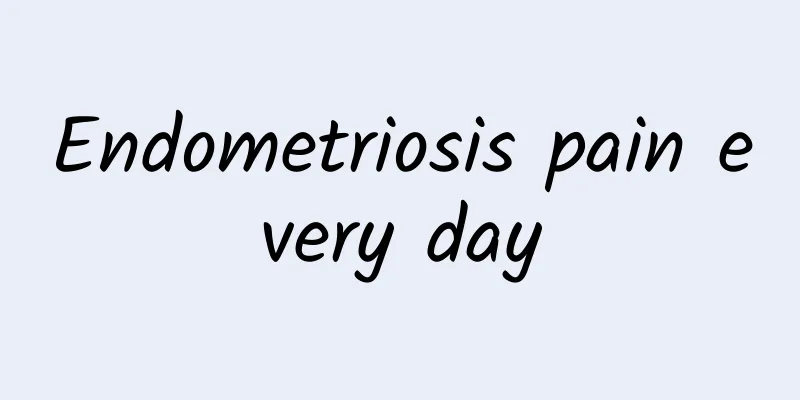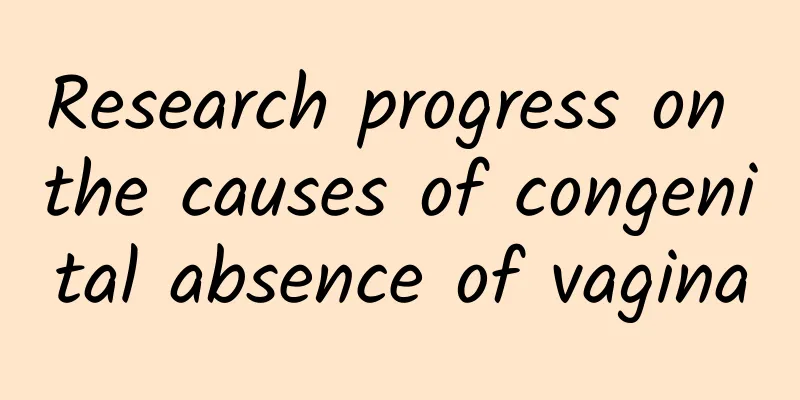Endometriosis pain every day

|
Women with endometriosis may experience significant pain during menstruation, but some may experience pain every day. This is usually related to the severity of the lesions and the location of the misplaced tissue. 1. Causes and symptoms Endometriosis is caused by the growth of endometrial cells outside the uterine cavity. These cells still bleed during the menstrual cycle, causing local inflammation and pain. Ectopic endometrial tissue can grow in multiple locations including the ovaries, fallopian tubes, pelvic cavity and even the abdominal cavity. Common symptoms include dysmenorrhea, chronic pelvic pain, menstrual abnormalities and infertility. For some women, this pain is not limited to the menstrual period, but may continue to affect daily life. 2. Influencing factors The frequency and intensity of pain may be related to a variety of factors, including the size and location of the misplaced tissue, the individual's pain sensitivity, and whether there are other gynecological diseases. Some women may be more sensitive to pain, or the misplaced tissue is located in a more sensitive area, causing them to experience pain every day. 3. Diagnosis and examination If endometriosis is suspected, your doctor will usually diagnose it through your medical history, physical examination, and imaging tests such as ultrasound or MRI. Sometimes a laparoscopy may be needed to confirm the diagnosis and assess the extent of the disease. 4. Treatment methods There are many ways to treat endometriosis, usually including medication and surgery. Medication mainly inhibits the growth of endometrial cells through hormonal regulation, such as the use of drugs such as medroxyprogesterone or goserelin. For patients who do not respond well to medication, surgery may be an option. Surgery can be conservative, removing the endometriosis, or radical, removing the uterus and bilateral adnexa. 5. Daily management and lifestyle adjustment In addition to medical treatment, daily management is also important. Maintaining a healthy lifestyle, such as eating a proper diet, exercising moderately, and getting enough rest, can help improve symptoms. Heat and relaxation exercises may also help relieve pain. 6. Psychological support and communication Long-term pain can have an impact on your mental health. Seeking psychological support and talking to other people with the condition may help. You can join a support group to share experiences and advice with other people with the condition. 7. When to see a doctor If the pain is interfering with your daily life or if you develop new symptoms, such as severe menstrual irregularities or infertility, you should see your doctor. Your doctor can help determine the cause of the pain and develop an appropriate treatment plan. Endometriosis can have a significant impact on quality of life, but with appropriate treatment and daily management, most patients can improve their symptoms and return to a normal life. Understanding your condition and maintaining good communication with your doctor are the keys to effectively managing the disease. |
<<: Can women detect endometriosis early?
>>: What causes vaginal itching?
Recommend
Can women eat vinegar after miscarriage?
In the case of an unexpected pregnancy, abortion ...
Eat glutinous rice balls on the winter solstice. The calories in 4 glutinous rice balls equals a bowl of rice! Five groups of people with diabetes and gastroesophageal reflux disease should pay attention to
"Come~ let's eat glutinous rice balls!&q...
What is the best medicine for bacterial vaginosis symptoms?
Symptoms of bacterial vaginosis include abnormal ...
What are the tests for Bartholinitis?
Unhealthy sex life may lead to Bartholinitis. In ...
What is the cost of left ovarian cyst?
Left ovarian cyst refers to a cystic mass in the ...
What are the precautions for vulvar leukoplakia
Vulvar leukoplakia mostly occurs in female friend...
What to do about irregular menstruation in different body types
Menstruation is a normal physiological phenomenon...
Eat a lot of processed food to prevent the spread of the virus, be careful not to get addicted and gain 2 kg in 2 weeks! Doctor: Eat the original food and lose 1 kg in half a month
When the calories of food are the same, changing ...
Good news! Sleeping 8 hours a day is not easy to gain weight
Lack of sleep and obesity are common civilization...
Is there any way to prevent uterine fibroids?
There is no clear way to prevent uterine fibroids...
Glutinous rice dumplings are high in sugar and cannot be eaten by diabetics
The Dragon Boat Festival on the fifth day of the ...
How long will the painless abortion menstruation last?
How long will a painless abortion period last? Pa...
Eliminate tuna belly and reduce waistline, one patch will work? Physical therapist: This 1 movement will help you lose belly fat
Sports tape has a magical effect. It has a modify...
What happens if cervical erosion is not treated?
What are the consequences of not treating cervica...
Which hospitals are good for treating congenital absence of vagina
When a patient is ill, he or she will entrust him...









